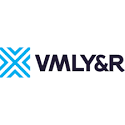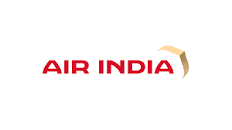Why You Need the ONA Lens
Explore how Organizational Network Analysis (ONA) and Social Capital uncover the hidden patterns of collaboration, trust, and influence that actually power your organization.

What is Organizational Network Analysis (ONA)?
Discover how OrgLens visualizes the real relationships, influence, and collaboration that shape how your organization works.

Why Social Capital Drives Organizations?
OrgLens Founder Santhosh Babu explains how social capital is the foundation of strong organizational networks.
Our Clients
Trusted by 40+ clients across banking, consulting, technology, real estate, pharma, social sector, FMCG, manufacturing, and more
How Leaders Create Impact with OrgLens
Mapping real relationships gives leaders the insight to identify talent, drive change, and strengthen culture.
Identify HiPo Leaders & Build Succession Pipelines
Reveal emerging talent through patterns of trust and influence. OrgLens helps you identify future leaders and ensure leadership continuity grounded in real connection and credibility.
Assess Leadership Impact & Effectiveness
See how leaders shape engagement and alignment. OrgLens uncovers the relational dynamics that drive leadership impact and inform focused development.
Accelerate Change & Enable Integration
Drive transformation, M&A, and onboarding success by activating the right connections. OrgLens identifies the influencers who enable alignment, engagement, and cultural cohesion.
Improve Collaboration & Drive Engagement
Understand how work and ideas move across teams. OrgLens reveals collaboration strengths and gaps, helping leaders improve engagement and cross-functional performance.
Diagnose Organizational Health & Build Agility
Reveal the underlying patterns that shape performance. OrgLens provides visibility into communication and trust dynamics that sustain agility and organizational resilience.
Strengthen Culture & Advance Inclusion
Create a culture where people feel connected and valued. OrgLens highlights belonging and cohesion patterns to help leaders advance inclusion and cultural alignment.
How OrgLens Works
Through a clear five-step process, from discovery to leadership action, we turn network insights into clarity, collaboration, and meaningful change.
1

Scoping the Need
We begin by understanding your context — why you’re exploring OrgLens, what challenges you want to solve, and what success looks like. This helps us tailor the analysis to your specific organizational goals.
2

Data Setup & Survey
We securely integrate your employee MIS and run a short, 5-minute pulse survey that captures collaboration, trust, and inclusion data — with no technical setup required on your end.
3

Proprietary Network Analysis
Using the OrgLens Network Engine, powered by 20+ years of OD and analytics expertise, we map how information, influence, and connection truly flow across your organization.
4

Report Generation
We build clear, interactive dashboards and social capital reports that translate complex network patterns into actionable insights leaders can easily interpret.
5
Leadership Workshop & Actionables
We facilitate sessions with leaders to turn insights into action — helping them strengthen collaboration, trust, and leadership impact across teams.
Employees Analyzed
Networks Analyzed
Connections Analyzed
Client Testimonials
Hear how OrgLens is helping HR and business leaders build stronger, more connected organizations.
Latest from Team OrgLens
BLOG


Demystifying Trends Using Social Network Analysis
Read More »
What does it take to be successful? You probably got it all wrong
Read More »VIDEOS

Webinar: How you can improve your organization using Network Analysis
Watch Now »
Webinar: ONA - A Tool For Measuring Inclusion
Watch Now »
Webinar: Enabling Community Engagement Using ONA
Watch Now »Frequently Asked Questions
Social Network Analysis (SNA) is a data-driven process of understanding social structures (links, connections, bonds between people in any part of society) through the use of networks and graph theory. SNA allows us to better understand how individuals are connected, and how information flows – this is critical for improving communication and mobilizing knowledge and resources. When SNA is applied to map the interactions and relationships in an organisation, it is referred to as an ‘Organisational Network Analysis’ (ONA), and if it is extended to include other entities than people, it is called a Link Analysis.
Organisational Network Analysis (ONA), a subset of Social Network Analysis (SNA), is a data-driven process of visualizing and analyzing informal relationships in the organization. A network analysis reveals patterns of collaboration and influence that are very different from the formal hierarchical structures that leaders rely upon to understand operations and make decisions. An ONA is able to provide detailed information about hidden factors for success, such as flow of information, decision-making, revenue-impacting collaborations, innovation, inclusion—even trust, engagement levels, and energy.
The focus of both, an SNA and an ONA, is to understand the network structure rather than the individual characteristics of the people in the network.
There are two ways of conducting an ONA, depending on the source of data used - active and passive.
- Active ONA is when one generates the data for the analysis by conducting an ONA survey. The survey is sent out to a unit of people whose relationship patterns we are interested in analyzing, and we ask them about the professional relationships that they have with other individuals within the organisation, in order to get their work done.
- The second way is a passive way of understanding relationships. This method uses data that already exists within the organisation, such as email logs, chat logs or in some cases even understanding who's collaborating on certain documents. Generally, passive ONA uses only meta-data of the messages, and not the message content, in order to mitigate privacy issues.
Understandably, active ONA is generally a one-time event, but passive ONA can give an analysis over a time period. Here are the key differences, summed up:
| Category | Active ONA | Passive ONA |
|---|---|---|
| Data Source | Surveys, questionnaires, all self-reported | Employee metadata:email, IM, collaboration data |
| Frequency | Snapshot, point-in-time data | Aggregate data over time periods or specific events, continuous monitoring (real-time) |
| Advantages | Survey questions offer greater context of relationships - causality, sentiment | View of volume, external relationships, easily scalable, many data option types, workflow |
| Risks / Bias | Low response rates, individual bias | Privacy concerns, requires context |
Though there is a hierarchical structure in any organisation, people interact beyond these formal structures, and slowly and steadily an informal network evolves within the organisation. These informal interactions determine the undercurrents and decide how the organisation evolves. Conducting an ONA gives an organisation the power to generate insights that determine how information flows through these networks, and how the organization can increase its operational effectiveness by making specific and targeted changes to increase collaboration and the exchange of information between the right people. Learn more ...
The general steps involved in conducting the an active ONA, is as follows:
- Determine the survey group
- Determine the questions that are used to map the relations
- Create a survey using these questions
- Let employees fill out the survey
- Generate social graph(s) by analysing the response of each employee and identifying the relationships between the employees
- Use statistical/ML tools to generate insights from the social graph(s)
The general steps involved in conducting the an passive ONA, is as follows:
- Determine the survey group
- Determine the digital platforms that need to be tracked (mails / slack / MS team etc…)
- Fetch data from these channels periodically
- Collate these data, parse the data and store it in a convenient format
- Generate social graph(s) by identifying the relationships between the employees
- Use statistical/ML tools to generate insights from the social graph(s)
Social Capital is the interpersonal relations, social networks, shared sense of identity, and trust within a society or organisation. In other words, social capital refers to features in a social organisation such as trust, norms, and networks that can improve the efficiency of the organisation. The concept of social capital was initially defined by sociologists as the aggregated value of connections between individuals and the norms of reciprocity developed from the network. Social capital is a commonly identified trait of social organization and includes trust between individuals and interpersonal connections that could increase the efficiency of society and create platforms that could be beneficial to all the parties. Social Network Analysis(SNA) and Organisational Network Analysis(ONA) helps us understand the social capital of a community or Organisation.


































